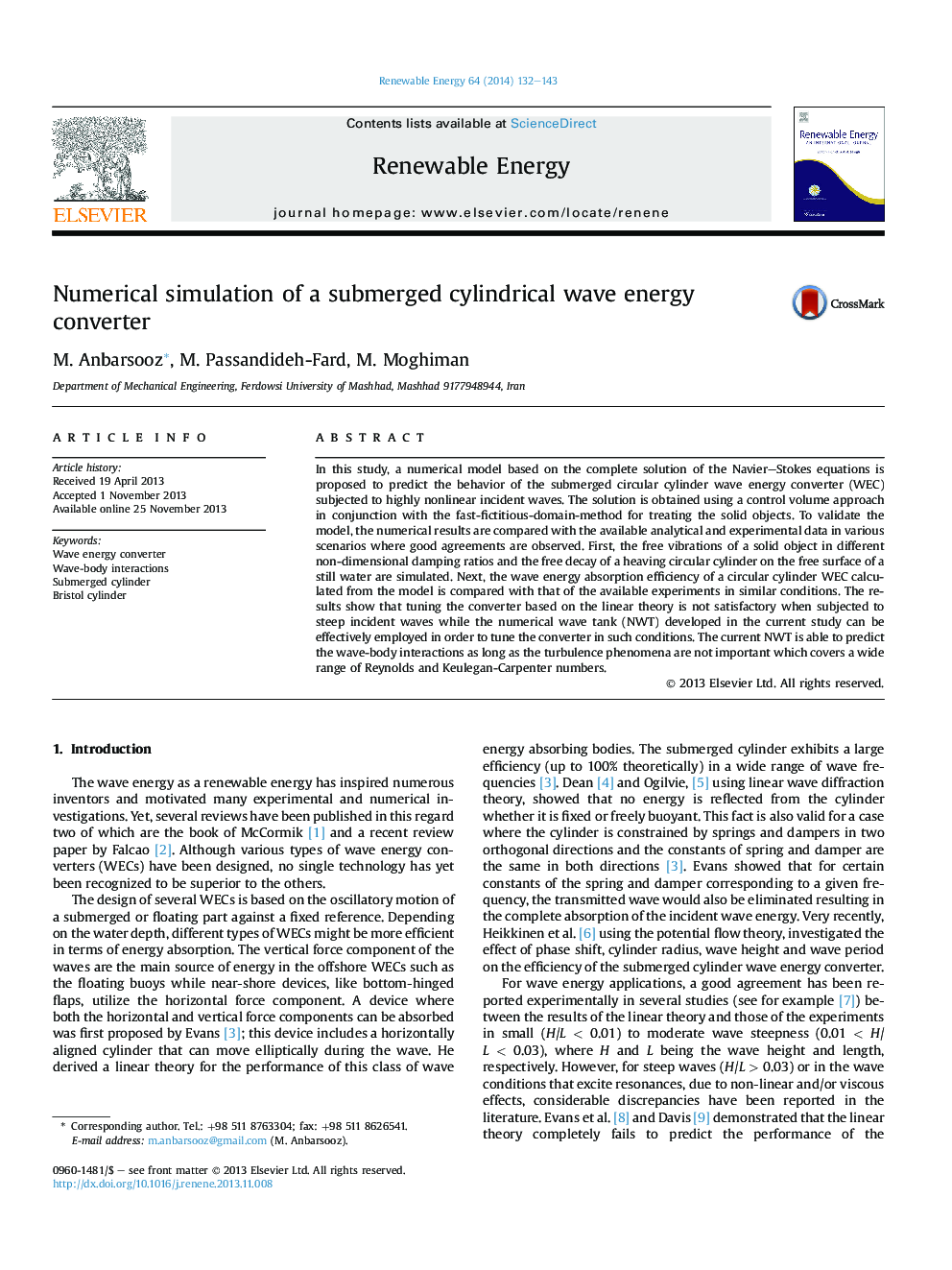| کد مقاله | کد نشریه | سال انتشار | مقاله انگلیسی | نسخه تمام متن |
|---|---|---|---|---|
| 300083 | 512469 | 2014 | 12 صفحه PDF | دانلود رایگان |
• A viscous numerical wave tank is developed based on the Navier–Stokes equations.
• The developed model is validated in several wave-body interaction scenarios.
• The performance of a submerged cylinder WEC subjected to steep waves is simulated.
• The results compared well with those of the available experiments in the literature.
• The developed model is used to tune the cylinder subjected to large incident waves.
In this study, a numerical model based on the complete solution of the Navier–Stokes equations is proposed to predict the behavior of the submerged circular cylinder wave energy converter (WEC) subjected to highly nonlinear incident waves. The solution is obtained using a control volume approach in conjunction with the fast-fictitious-domain-method for treating the solid objects. To validate the model, the numerical results are compared with the available analytical and experimental data in various scenarios where good agreements are observed. First, the free vibrations of a solid object in different non-dimensional damping ratios and the free decay of a heaving circular cylinder on the free surface of a still water are simulated. Next, the wave energy absorption efficiency of a circular cylinder WEC calculated from the model is compared with that of the available experiments in similar conditions. The results show that tuning the converter based on the linear theory is not satisfactory when subjected to steep incident waves while the numerical wave tank (NWT) developed in the current study can be effectively employed in order to tune the converter in such conditions. The current NWT is able to predict the wave-body interactions as long as the turbulence phenomena are not important which covers a wide range of Reynolds and Keulegan-Carpenter numbers.
Journal: Renewable Energy - Volume 64, April 2014, Pages 132–143
